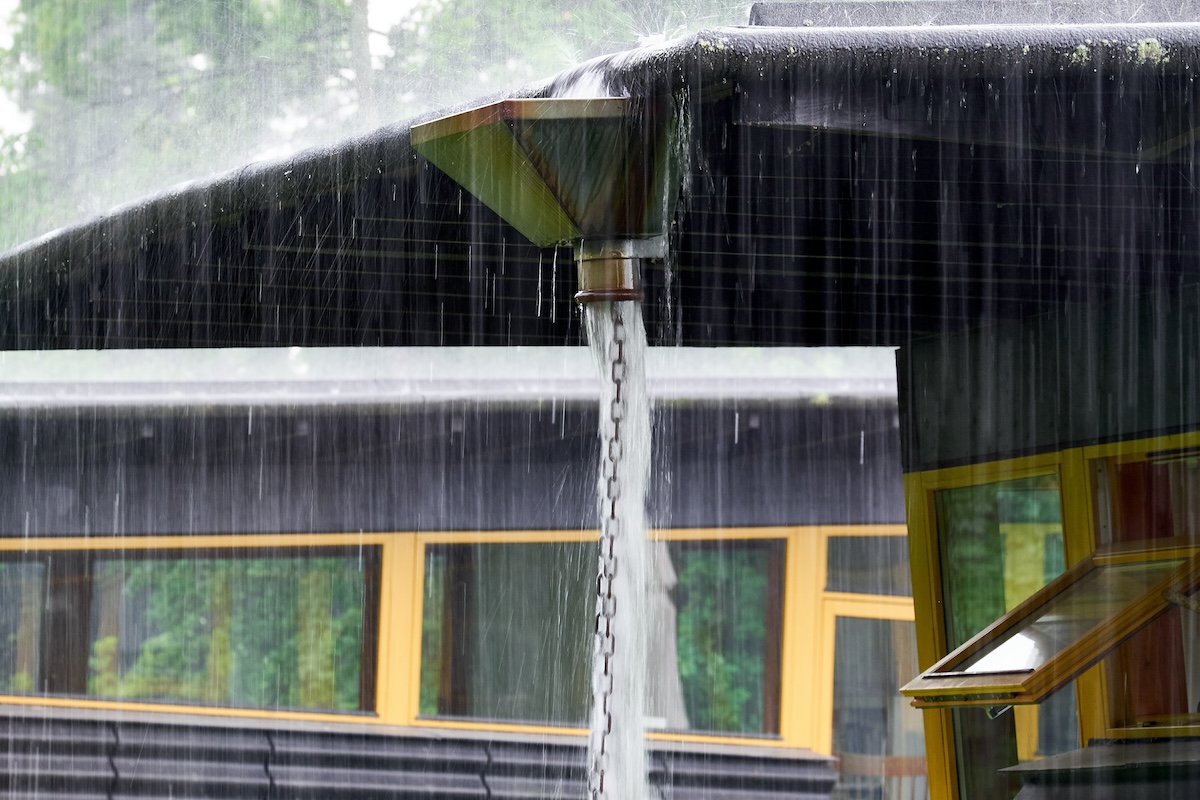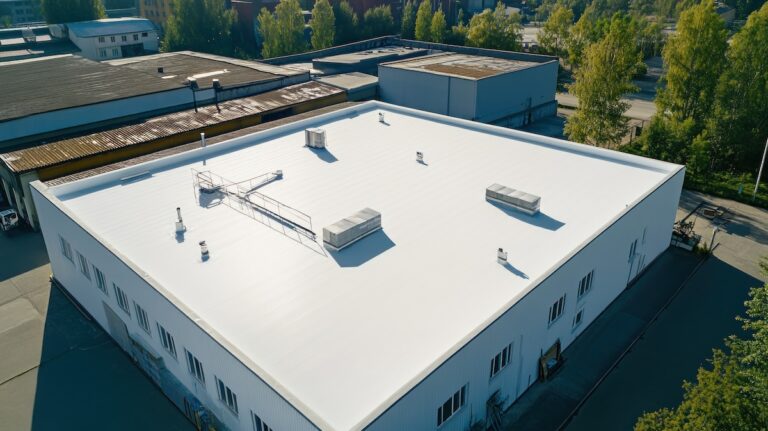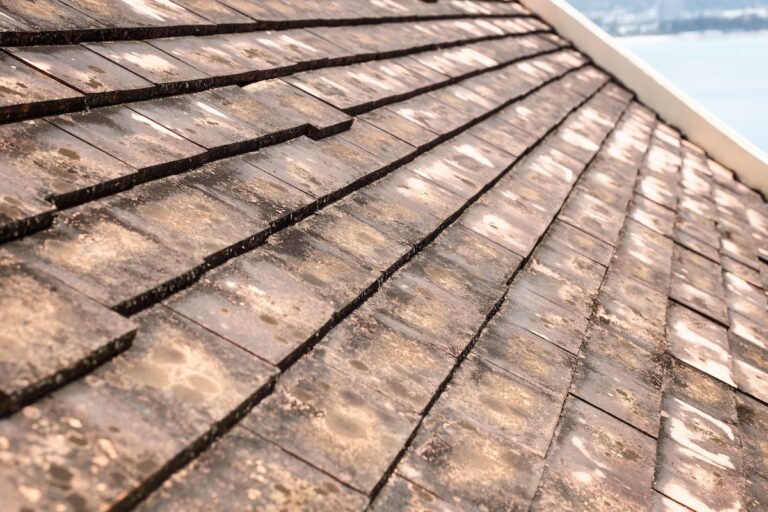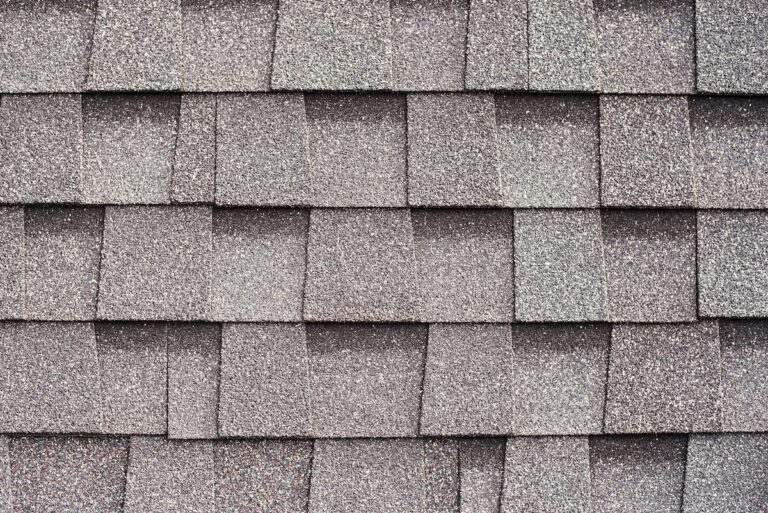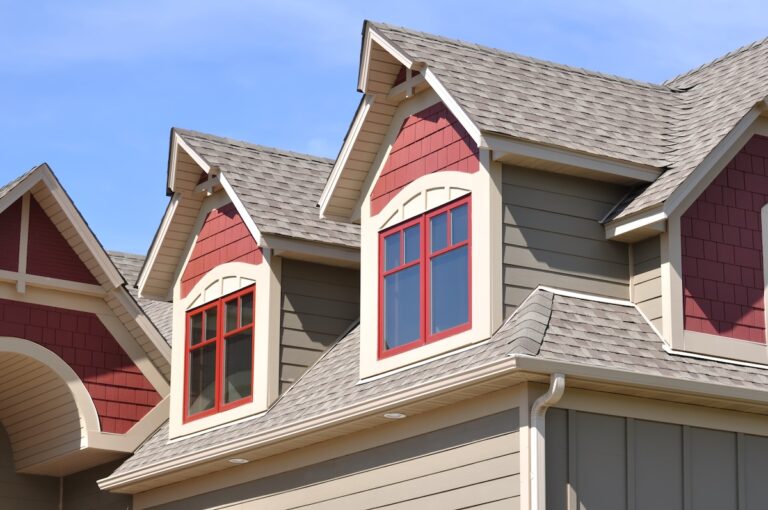When managing water drainage and roofing solutions, roof scuppers take center stage in keeping buildings safe from water damage. These essential devices are vital for effective drainage in flat or low-sloped roofs. If you’ve been wondering whether a roof scupper is right for your property or are looking to upgrade your current system, this guide is here to help. We’ll highlight:
- What a roof scupper is
- How they work
- Their benefits
- Why they could be the missing piece for optimal roof drainage in your building
What Are Roof Scuppers?
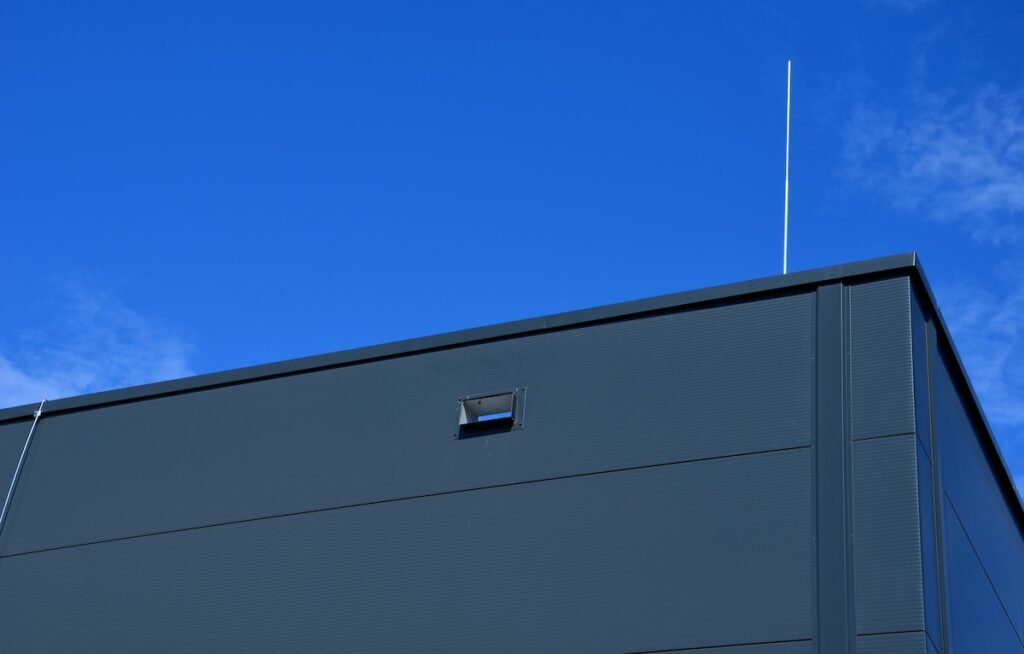
A roof scupper is a drainage device installed in the parapet wall or edge of a flat or low-sloped roof. Scuppers work by allowing rainwater and melted snow to flow off the roof through openings, guiding it safely down and away from the structure. These systems are often paired with downspouts to direct water more efficiently, helping to prevent standing water, leaks, and potential structural damage.
Scuppers come in a wide array of styles, sizes, and materials, allowing them to blend functionality with aesthetic appeal. Despite their simple concept, they play a major role in creating an effective roofing drainage system.
The Importance of Proper Roof Drainage
When water collects on a flat or low-sloped roof without proper drainage, it can lead to several problems like ponding water, structural weakening, and even roof collapse in severe cases. Here’s why roof drainage is vital:
- Prevents Water Damage: Prolonged exposure to ponding water may cause leaks, damage building materials, and lead to mold growth.
- Extends Roof Lifespan: Several roofing materials deteriorate faster when under constant stress from standing water.
- Mitigates Structural Strain: Excessive water adds weight to the roof, creating unnecessary stress for the building’s structure.
- Ensures Safety: The risks of roof collapse or water overflow can pose threats to occupants and the property overall.
A roof scupper addresses these challenges by efficiently ensuring that water is drained away from these sensitive areas. Learn more about effective flat roof drainage solutions to prevent these issues and protect your building’s integrity.
How Roof Scuppers Work
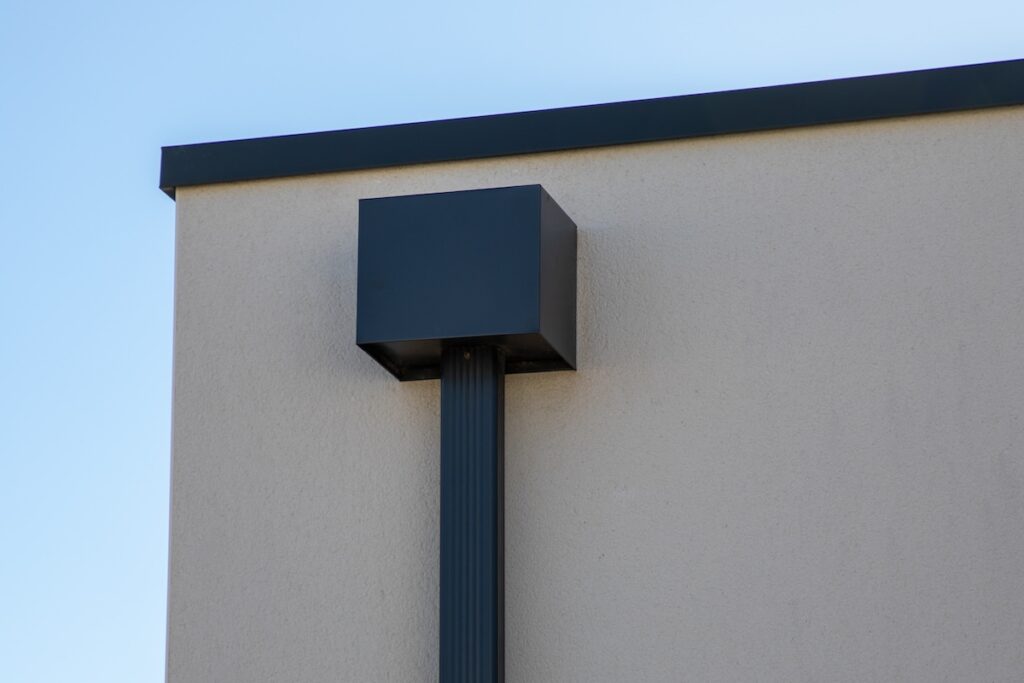
The function of a roof scupper is straightforward. When it rains or when snow begins to melt, water flows across the sloped roof toward the scupper. The scupper directs the water through its opening and either lets it drain naturally or channels it into a connected downspout system. The purpose is to create an efficient path that safely directs water off the roof and away from the building.
Components of a Roof Scupper System
A complete roof scupper system usually consists of:
- Scupper Opening – The opening installed within the parapet wall or roof edge where water passes through.
- Downspout (Optional) – A vertical pipe that connects to the scupper to channel water directly to the ground safely.
- Splash Guards or Extensions – Accessories that prevent water from splashing against the building or directly depositing onto walkways.
- Splash Blocks – Positioned on the ground, these help disperse water from the downspout and protect nearby landscaping.
Depending on your building’s specific needs, the scupper system can be customized for optimal performance and design integration. For expert installation and inspection, trust our professional roofing services in Blue Bell.
6 Important Benefits of Roof Scuppers
When it comes to drainage, roof scuppers offer distinct advantages over other systems, like internal drains and gutters.
1) Cost-Effective Installation
Roof scuppers typically cost less to install than complex systems like internal roof drains. Their simple design means less material and labor during installation, making them an attractive option for property owners on a budget.
2) Low Maintenance
Unlike internal drains, scuppers don’t involve underground piping that could require frequent servicing. Their ease of accessibility allows for quick cleaning of debris like leaves and dirt, reducing long-term maintenance efforts.
3) Prevention of Pooling Water
Flat roofs are more prone to water accumulation, but roof scuppers prevent standing water by ensuring consistent drainage, even during heavy rainfall.
4) Enhanced Durability
Made from materials like steel, aluminum, or copper, roof scuppers are built to endure exposure to the elements without significant deterioration.
5) Dual Functionality
Scuppers take on both functional and aesthetic roles. They can be designed to complement the architecture of your building while also playing a key part in preventing water damage.
6) Reliable Performance
When installed correctly, scuppers can handle significant water volumes, making them an excellent choice for areas prone to heavy rainfalls.
Types of Roof Scuppers
Not all roof scuppers are created equal, and selecting the right type for your roof ensures optimal performance. Below are some widely used types:
Through-Wall Scuppers
These are the most common type of scuppers. Installed within the parapet wall, water drains directly through the scupper onto the ground (or into a downspout). If you’re considering pairing your drainage system with a durable flat roof membrane, check out our TPO roofing installation guide.
Best for: Buildings with parapet walls or when direct drainage is desired.
Overflow Scuppers
An overflow scupper serves as a safety measure. These are installed at a level slightly higher than the main scupper to create a secondary drainage path if the primary system becomes overwhelmed or clogged.
Best for: Roofs in areas with heavy rainfall or frequent storms to mitigate overflow risks.
Spout Scuppers
Spout scuppers include a protruding spout or tube that channels water away from the surface of the building, preventing streaks or water deposits on the façade.
Best for: Those looking to preserve aesthetics while ensuring efficient drainage away from walls.
Custom Design Scuppers
Tailored scuppers can come in various shapes, styles, and materials to match the design and drainage needs of the building. These often include decorative features that enhance the architectural aesthetic.
Best for: Property owners looking for functional and highly aesthetic solutions for roof drainage.
Key Factors When Choosing a Roof Scupper
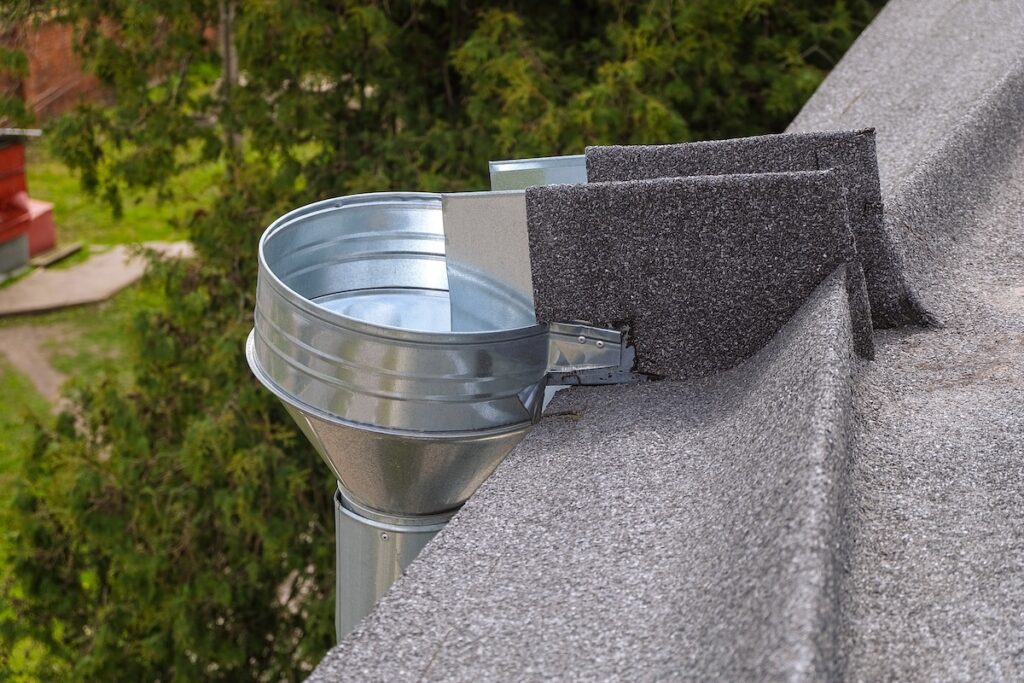
While roof scuppers are highly versatile, there are key factors to consider before choosing a system for your building:
- Roof Type: Flat or low-sloped roofs benefit most from scuppers due to their natural water flow directional needs.
- Building Architecture: Ensure your chosen scupper design aligns with the visual aesthetics of the property.
- Material: Select durable materials like copper, aluminum, or coated steel for longevity and weather resistance.
- Expected Water Volume: Larger scuppers or multiple systems may be required in areas prone to heavy rainfall.
- Building Location: Consider factors like local weather conditions, temperature fluctuations, and potential freeze-thaw cycles to avoid issues.
Your roofing contractor can help you identify the right solution based on your building’s dimensions and environmental factors. Our team specializing in commercial roofing can help you determine the best drainage solution for your property type.
Installation Tips for Roof Scuppers
Proper installation is crucial for a roof scupper to function effectively. Here are some essential tips:
- Ensure Proper Placement: Scuppers should ideally be placed at the roof’s lowest edges or the end of the slope to encourage consistent water flow.
- Seal Well: Ensure seams and edges around the scupper are fully sealed to prevent leaks and maintain structural integrity.
- Pair with Downspouts (if needed): Install downspouts as part of the system for efficient vertical water removal.
- Install Overflow Scuppers for Safety: Always consider adding overflow scuppers to manage excess water in high-precipitation environments.
It’s advisable to hire professional roofers like G. Cannon Roofing to handle scupper installation to ensure functionality and reliability.
Regular Maintenance for Roof Scuppers
Maintaining roof scuppers is straightforward and primarily involves periodic inspections. Here are simple steps you can follow:
- Remove Debris regularly to ensure the open area remains unobstructed.
- Inspect Seals during seasonal checks to identify potential leaks or cracks.
- Clean Downspouts, if applicable, to prevent blockages.
- Inspect for Damage to ensure materials like metal scuppers remain in good shape without dents or rust.
By setting a maintenance routine, you can significantly extend the life and efficiency of your roof scupper system.
Why Choose G. Cannon Roofing for Your Roof Scupper Needs?
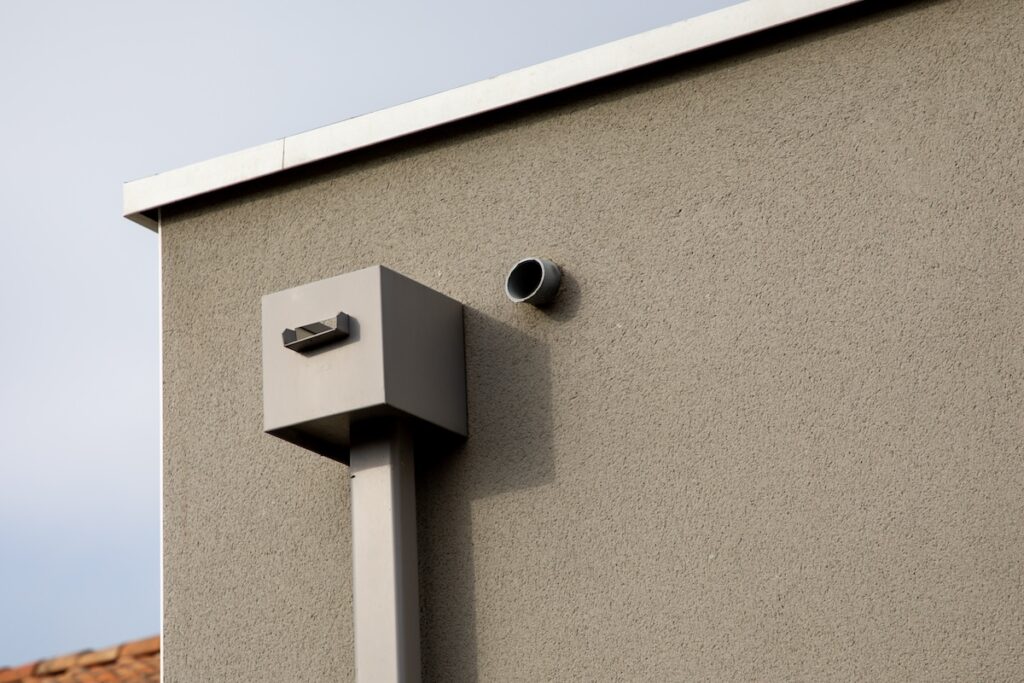
At G. Cannon Roofing, we understand the importance of a robust drainage system tailored to your building’s unique requirements. With years of experience in installing and maintaining flat and low-sloped roof systems, our team provides:
- Detailed assessments of your roof’s drainage needs
- High-quality materials to withstand environmental conditions
- Seamless installations to prevent leaks and water damage
- Reliable customer service and post-installation support
Protect your property with expert roofing solutions—contact G. Cannon Roofing today!
We’ll Improve Your Building’s Drainage System
Roof scuppers may be a small component of the roof, but their role in maintaining the longevity and safety of a building cannot be overstated. From preventing water damage to enhancing your roof’s drainage capabilities, these systems are an investment worth making. Whether you’re considering a new installation or upgrading your current system, roof scuppers offer efficient performance and aesthetic versatility.
If you’re ready to install or upgrade your drainage system, reach out to G. Cannon Roofing for an evaluation—because when it comes to your roof, every drop matters!
